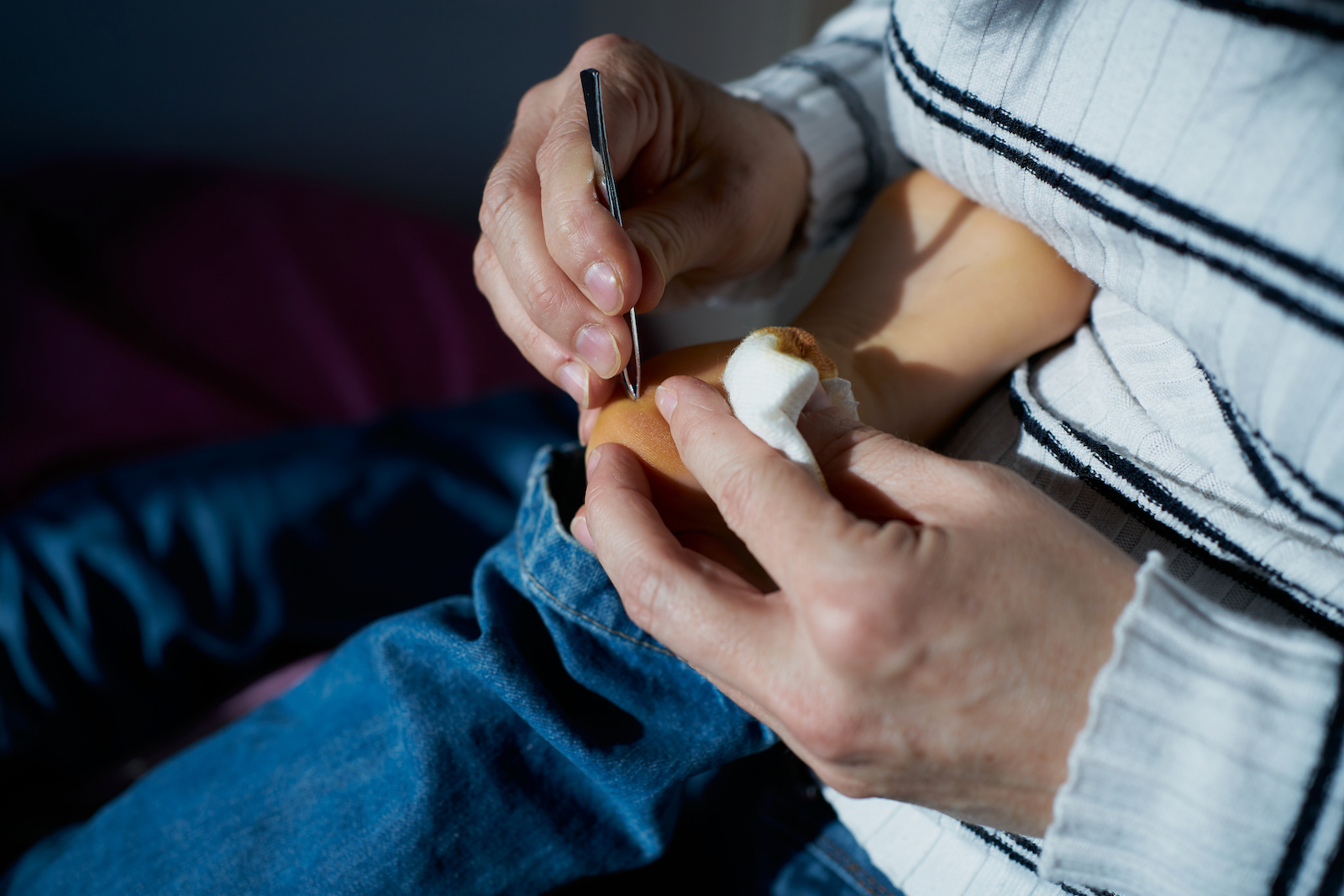What happens if you don't take out a splinter?
Leaving a splinter in the skin can cause inflammation, infection and permanent bumps in the skin, medical experts said.

If you’ve ever had a splinter before, then you’ll know they can be painful and often quite difficult to remove, too. So, what happens if you don’t take out a splinter?
Splinters can break the skin, allowing for inflammation, infection, toxic reactions, and granuloma formation, especially if booster vaccinations are not up to date, according to the American Association of Family Physicians.
"Skin is a physical barrier that prevents infections. Leaving a splinter in the skin makes it easier for bacteria outside of the skin to actually get under the skin," certified nurse practitioner Ashley Jones told Live Science.
If the splinter carried bacteria, then leaving it in the skin provides an easy way for the bacteria to work its way into your bloodstream, Jones said.
You can attempt to remove splinters by applying a slow, steady pressure and using some tweezers however if this fails, Jones advised "seeking health care."
Related: Why do our fingernails keep growing until the day we die?
Not all splinters can be safely removed at home. Dr. Jefrey Biehler, chair of pediatrics at Nicklaus Children’s Hospital in Miami, told Live Science that removing a deeply embedded splinter can cause bleeding. If splinter removal causes heavy bleeding, head to a health care center where they can help using sterile instruments.
Get the world’s most fascinating discoveries delivered straight to your inbox.
Splinters that are left in the body aren’t simply absorbed. Instead, the body is more likely to reject the splinter and try to push it out which can create inflammation and pockets of pus, Biehler added.

If the inflammatory response continues for several days or weeks, the area can sometimes develop a somewhat permanent bump or what's called a "granuloma," Jones added. This is kind of a protective bubble of immune system cells that surround the foreign object the body wasn't able to oust.
Sometimes the body can naturally expel a splinter from the skin without causing an inflammatory response, Biehler said. Other times, the splinter may stay in the skin forever.
Biehler noted that one of his nurse friends has had an inch-long (2.54cm) thorn in her hand for the past 40 years. "You can feel it, she can move it … [but] it doesn't cause her any pain," he said. "She's been fine for 40 years." The splinter doesn't carry as big of a risk of infection as when she first got it, because the skin closed on top of it, he added.
"It is a fine line between what needs to be seen [by a doctor], what needs to be removed and what can be left alone," Biehler said. But in general, splinters you get around the house or those that come from plant materials, such as wood, "usually need to come out, because the body reacts to it."
In any case, foreign bodies lodged in the skin — especially in children and the elderly, who may be more prone to infections — should be evaluated by a health care professional, he said.
Originally published on Live Science on June. 15, 2019, and updated on Nov. 2, 2022.
This article is for informational purposes only and is not meant to offer medical advice.

Yasemin is a staff writer at Live Science, covering health, neuroscience and biology. Her work has appeared in Scientific American, Science and the San Jose Mercury News. She has a bachelor's degree in biomedical engineering from the University of Connecticut and a graduate certificate in science communication from the University of California, Santa Cruz.
- Alice BallEditor



